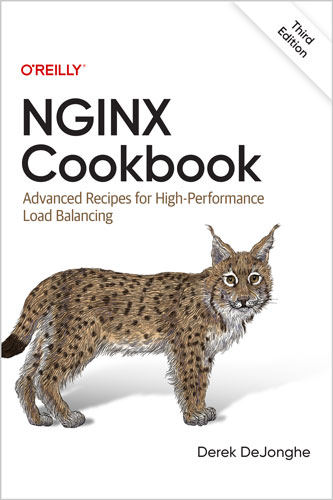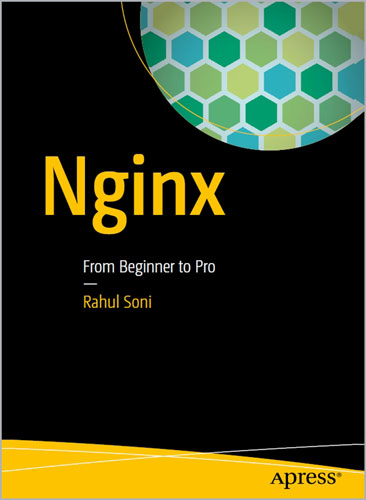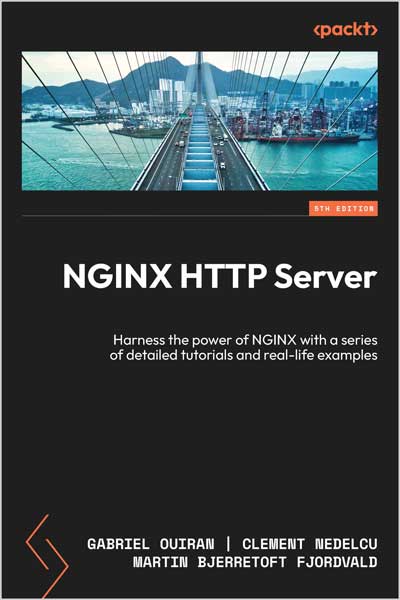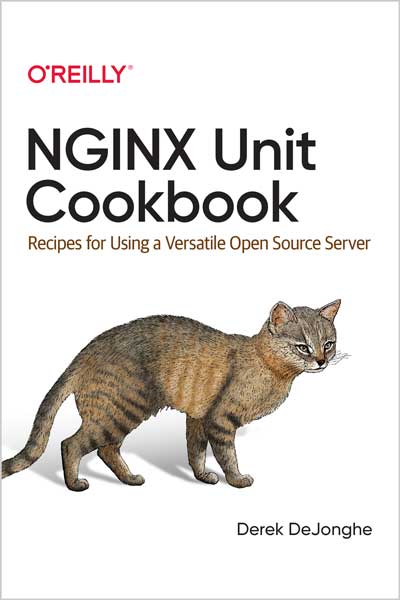Advanced Recipes for High-Performance Load Balancing
Derek DeJonghe

#NGINX
#HTTP
#TCP
#UDP
#HTTP3
#HTTP5
#cookbook
#AWS
#Azure
#cloud
#WAF
NGINX is one of the most widely used web servers available today, in part because of itscapabilities as a load balancer and reverse proxy server for HTTP and other network protocols. This revised cookbook provides easy-to-follow examples of real-world problems in application delivery. Practical recipes help you set up and use either the open source or commercial offering to solve problems in various use cases.
For professionals who understand modern web architectures, such as n-tier or microservice designs and common web protocols such as TCP and HTTP, these recipes provide proven solutions for security and software load balancing and for monitoring and maintaining NGINX's application delivery platform. You'll also explore advanced features of both NGINX and NGINX Plus, the free and licensed versions of this server.
You'll find recipes for:
- High-performance load balancing with HTTP, TCP, and UDP
- Securing access through encrypted traffic, secure links, HTTP authentication subrequests, and more
- Deploying NGINX to Google, AWS, and Azure cloud
- Setting up and configuring NGINX Controller
- Installing and configuring the NGINX App Protect module
- Enabling WAF through Controller ADC
- NGINX Instance Manager, Service Mesh, and the njs module
Table of Contents
Chapter 1. Basics
Chapter 2. High-Performance Load Balancing
Chapter 3. Traffic Management
Chapter 4. Massively Scalable Content Caching
Chapter 5. Programmability and Automation
Chapter 6. Authentication
Chapter 7. Security Controls
Chapter 8. HTTP/2 and HTTP/3 (QUIC)
Chapter 9. Sophisticated Media Streaming
Chapter 10. Cloud Deployments
Chapter 11. Containers/Microservices
Chapter 12. High-Availability Deployment Modes
Chapter 13. Advanced Activity Monitoring
Chapter 14. Debugging and Troubleshooting with Access Logs, Error Logs, and Request Tracing
Chapter 15. Performance Tuning
The NGINX Cookbook aims to provide easy-to-follow examples of real-world problems in application delivery. Throughout this book, you will explore the many features of NGINX and how to use them. This guide is fairly comprehensive, and touches on most of the main capabilities of NGINX.
The book will begin by explaining the installation process of NGINX and NGINX Plus, as well as some basic getting-started steps for readers new to NGINX. From there, the sections will progress to load balancing in all forms, accompanied by chapters about traffic management, caching, and automation. Chapter 6, “Authentication”, covers a lot of ground, but it is important because NGINX is often the first point of entry for web traffic to your application, and the first line of application-layer defense against web attacks and vulnerabilities. There are a number of chapters that cover cutting-edge topics such as HTTP/3 (QUIC), media streaming, cloud, SAML Auth, and container environments—wrapping up with more traditional operational topics such as monitoring, debugging, performance, and operational tips.
I personally use NGINX as a multitool, and I believe this book will enable you to do the same. It’s software that I believe in and enjoy working with. I’m happy to share this knowledge with you, and I hope that as you read through this book you relate the recipes to your real-world scenarios and will employ these solutions.
About the Author
Derek is an Amazon Web Services Certified Professional. He specializes in Linux/Unix based Systems and Web Applications. His background in Web Development, System Administration and Networking make him a valuable cloud resource. A lot of his focus lately has been Infrastructure Management, Configuration management, Continuous Integration and developing tools for a dynamic infrastructure (DevOps). He maintains the systems, networks and deployments of multiple multi-tenant SaaS offerings.



